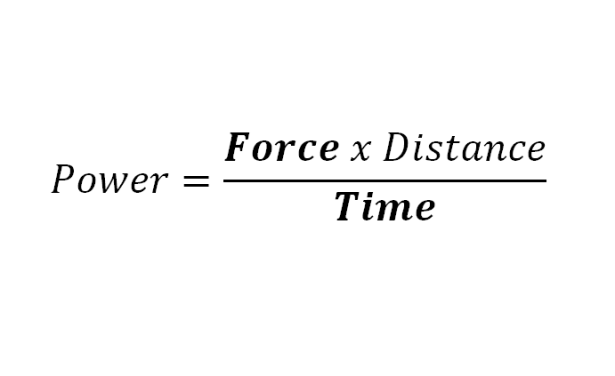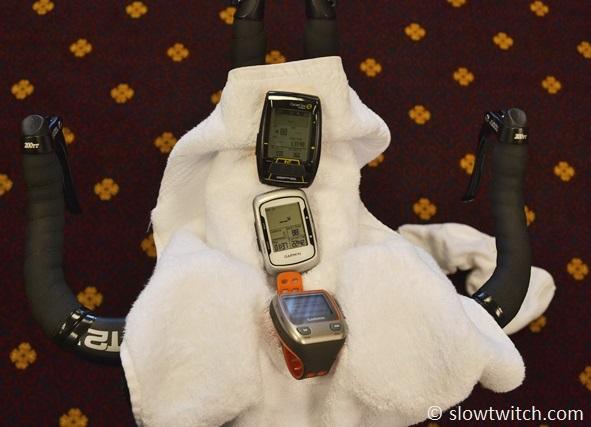Pioneer Reintroduces Power
Many of you saw the Pioneer power meter debut in 2012. It was largely met with cautiously optimistic reception; some lauded its dual-leg power measurement, while others criticized the fact that parts of it attached to the crank via plastic zip-ties. It also had a very high price tag, at over $2,000 for only the power hardware – no cranks included. I ran through the Pioneer booth at Interbike last year for a quick look, but I wasn’t overwhelmed.
Today, Pioneer is announcing a highly revamped system, and has set out to reset our collective expectations of their entry in to the power meter market. Sales begin the week of March 10, 2014 in the US.
The zip ties? They’re gone.
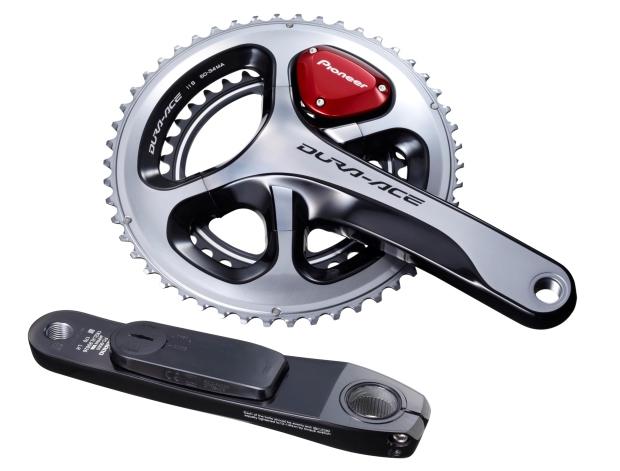
Before we move any further, here are the basic specifications of the 2014 system.
Pioneer Dual-Leg Power Meter Crank Set specifications:
MSRP: $1,850 (Dura Ace 9000), $1,550 (Ultegra 6800) including crank set
Weight: 66 grams
Accuracy rating: +/-2%
Data transmission: Modified ANT+, Wifi
Crank length options: 165 – 177.5 (180mm in testing currently)
Power file format: .db (can be converted to .fit)
Chainring sizes: 50/34, 52/36, 52/38, 53/39
Battery size: 2 x CR2032 coin cell, user replaceable
Battery life: 120 hours
Water Resistance certification: IPX6 & IPX7
Availability: Mid-March 2014 ship date
At first glance, what jumps out from the spec sheet? First, the price has come down significantly compared to the original introduction. The prices you see above include the actual crank arms and chainrings – you’re buying a complete system. Second, this system is very light at 66 grams. That is heavier than the 20-gram Stages power meter, but quite a bit lighter than other crank-based systems weighing in the ballpark of 200 grams. Finally, while the CR2032 batteries are user-replaceable, the quoted life is on the short side, at 120 hours. Stages and Powertap operate on the same size battery, but quote 200 hours of use; Quarq is good for 300 hours.
The Pioneer Power Meter will initially be available only for Shimano Ultegra 6800 and Dura Ace 9000 crank systems, in the lengths shown on the table below. I’m told that they have ‘high aspirations’ to offer a system in the future for carbon cranksets.

While the system was originally shown on Dura Ace 7900 cranks (the previous generation from Shimano), they’ve updated to the newest stuff. The only question we’re left with is – what about folks with 10-speed systems on their bikes? 6800 and 9000-series cranks are intended for 11-speed chains, but I’d venture a guess that over 75% of the market still has 9 or 10-speed. It could be the case that the new crank works fine, but we’ll have to see. Shimano representatives have told me that they recommend a matching crank and chain for optimum performance.
Aside from that, the biggest difference between the old and new system is that it now uses an accelerometer to determine the cranks’ position throughout the pedal stroke, rather than the old bottom bracket plate. If you’re not familiar with the old system, it required a plate with twelve magnets to be very precisely placed and timed on the frame. When combined with the old larger sensor shape, the system was not compatible with many Trek bike frames, and most triathlon bikes that featured hidden brakes.
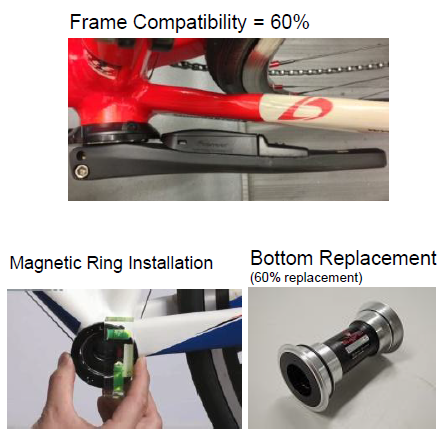
Personally, I think the 12-magnet system is super cool in theory. While systems like SRM and Quarq rely on a single frame-mounted magnet to determine each cadence event (e.g. single complete pedal stroke), the Pioneer system could give you 12 discreet events within a single pedal stroke. If you want to talk about fine data analysis… well, this would give you a TON of possibilities. I understand the desire to get away from this, however, if the installation was too cumbersome for the average consumer.
The new Pioneer system is a mix of old and new. It uses two magnets; one per left / right crank. These magnets can be mounted right on the chainstays (left in photo below), or via two small mounts on top of the chainstays (right) – the latter being intended for triathlon frames and Trek frames that didn’t work with the old system.
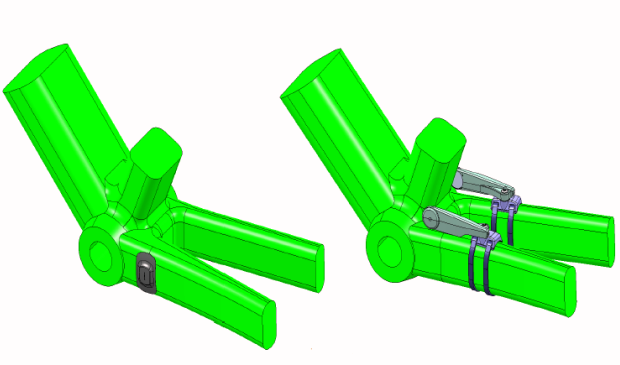
These magnets are combined with an accelerometer that serves to ‘find’ the crank within each pedal stroke. In a way, it’s combining a ‘subjective’ system (the accelerometer) with an ‘objective’ one (the magnet/reed switch), for a middle ground of ease-of-use and super-science-guy analysis. Pioneer representatives tell me that the system still tells gives you power measurement at twelve points throughout the pedal stroke (every 30 degrees), and then does a final ‘check’ at each complete RPM when the crank passes by the magnet.
The other unique feature of the Pioneer power meter is that it also provides what they’re calling ‘Force Vector Display’. At each of the twelve points, it tells you your power, and also the direction:
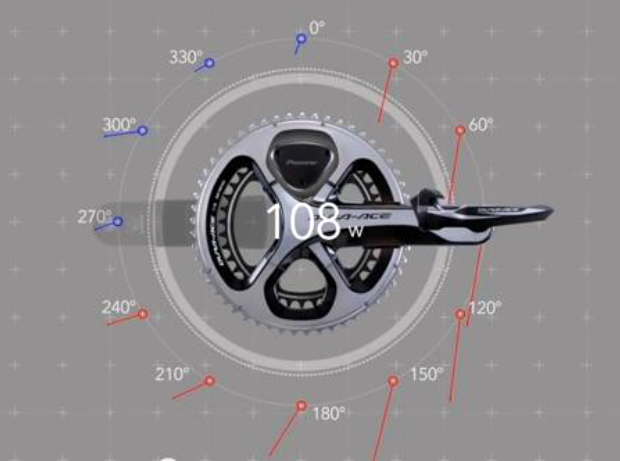
In order to see this data, you must use the Pioneer head unit, which we will discuss in a moment.
The quoted accuracy of the Pioneer system is +/- 2%, which is the same as Stages, but less than Powertap (1.5%), Quarq (1.5%), and SRM (1%). I personally have to wonder if this is due to the use of the accelerometer, and its power calculation at every 30 degrees. We’ve written on this subject extensively in the past; in a nutshell, the limitation in all power measurement is not the accuracy of the strain gauges, but rather the speed at which you can measure events – finite pieces of time to perform a power calculation. Your cranks only turn so fast. It doesn’t matter how fast your data transmits if you can’t have the necessary piece of the power equation – time – which is available when you complete an event.
When Stages debuted their system, I asked if it would be possible to split the pedal stroke up in to four ‘slices’ – one every 90 degrees. This would allow for four power calculations per completed pedal stroke, and much finer analysis (at the expense of huge data files). I was told – and have since been told by others – that the required accelerometer sensitivity is too difficult to achieve, at least at a reasonable price. If the Pioneer system can truly spit out numbers every 30 degrees, it would represent a significant jump in technology.
The other key update to the product is that the ‘pod’ now attaches via a plate that bolts to the back of the right crank arm, rather than the old zip ties. The left-arm sensor attaches purely via an adhesive.
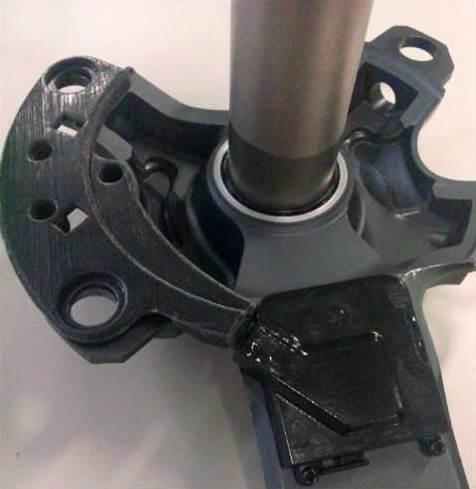
Pioneer tells me that this plate uses the stock chainring bolts and that you do not need to recalibrate the system when swapping chainrings. They did say that – at least as of today – they only recommend stock 6800 and 9000 rings, no Rotor or Osymmetric allowed.
For the non-tech savvy, here is the ‘in-a-nutshell’ comparison of the new and old systems from Pioneer (the Athlete and Athlete-Lite names are used for purposes of differentiating the two styles):
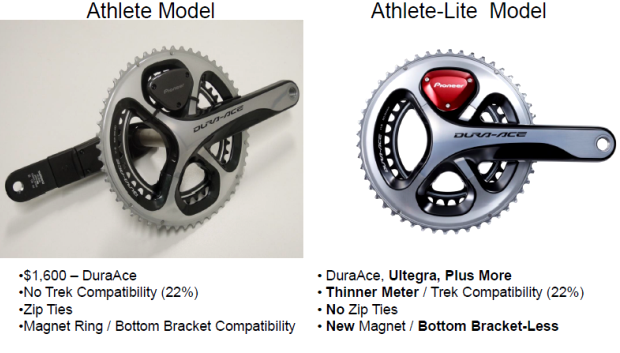
How does one go about installing one of these systems? Can you order hardware from Pioneer and bolt it to your crank?
Cranks are sold in two ways:
1) Complete systems from Pioneer
2) Your crank can be sent in to their two US distributors, QBP and KHS. You bring the crank to your local bike shop, and they manage the shipping, much like existing programs for mountain bike suspension rebuilds. Any complicated service can be handled at the Pioneer US service center in Long Beach, CA.
Pioneer representatives tell me that the power meter may be removed from the crank arms, and that the adhesive will not damage the cranks. You cannot, however, transfer the system to another crank because the removal process damages it.
New head unit and software
The other big news for Pioneer is a brand new GPS head unit, called the SGX-CA500:
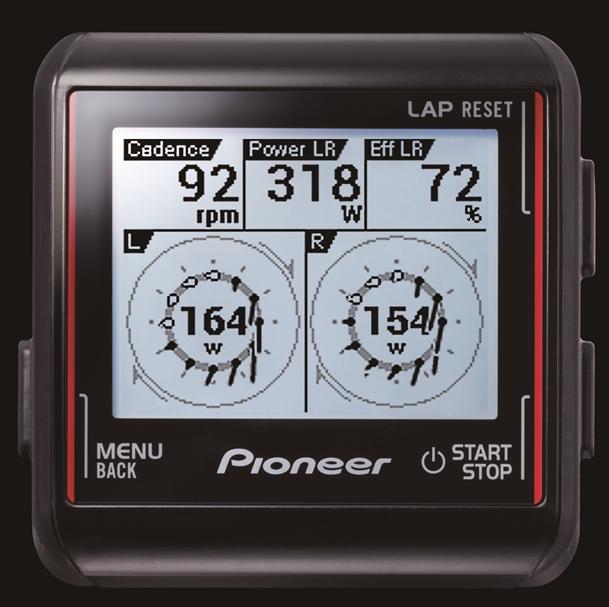
Compared to the original CA900, it is smaller, lighter, and now has Wifi capability. When it gets synched with your home network, you can automatically download power files without plugging in to your computer. The new computer did ditch the color screen display, in an effort to cut size and weight.
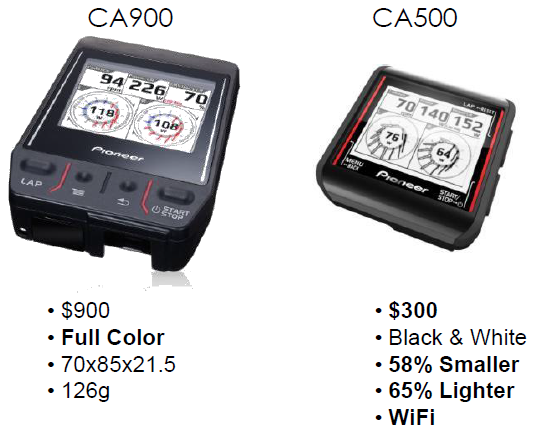
For a size comparison, here is the new CA500 compared to common Garmin head units:
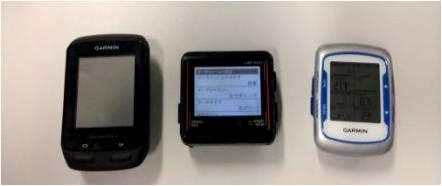
The head unit receives in a modified ANT+ protocol that allows for the Force Vector display, which is not a normal part of ANT+. Pioneer representatives said that it is also compatible with the latest ANT+ dual-leg power metrics like Pedal Smoothness. They also have their own metric for Left/Right leg efficiency, but we do not have any details on it at this time.
If you want to use your existing Garmin or other ANT+ device, the Pioneer cranks can transmit in standard ANT+ protocol as well – but you lose the unique Pioneer features.
Pioneer is also into the software game, with their updated Cyclo-Sphere:

While we do not have great detail at this time, we’re told that this is a home-based system that also has online training log capability (think TrainingPeaks). Pioneer told me that TrainingPeaks is not as popular in the Japanese market (where they’re based), and they wanted to offer their own option.
The Pioneer power meter is fully compatible with products like TrainingPeaks and Strava. Its stock file format is .db, but it can be converted in to more common formats such as .fit.



